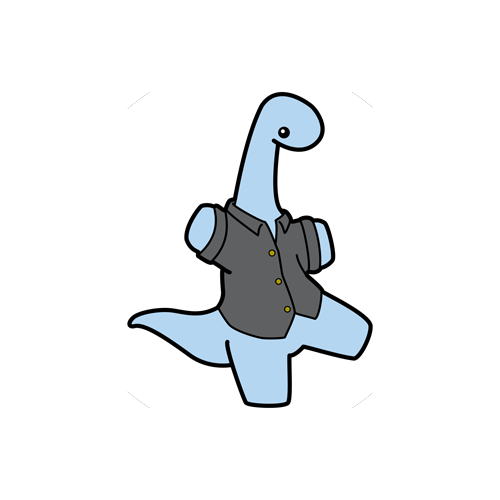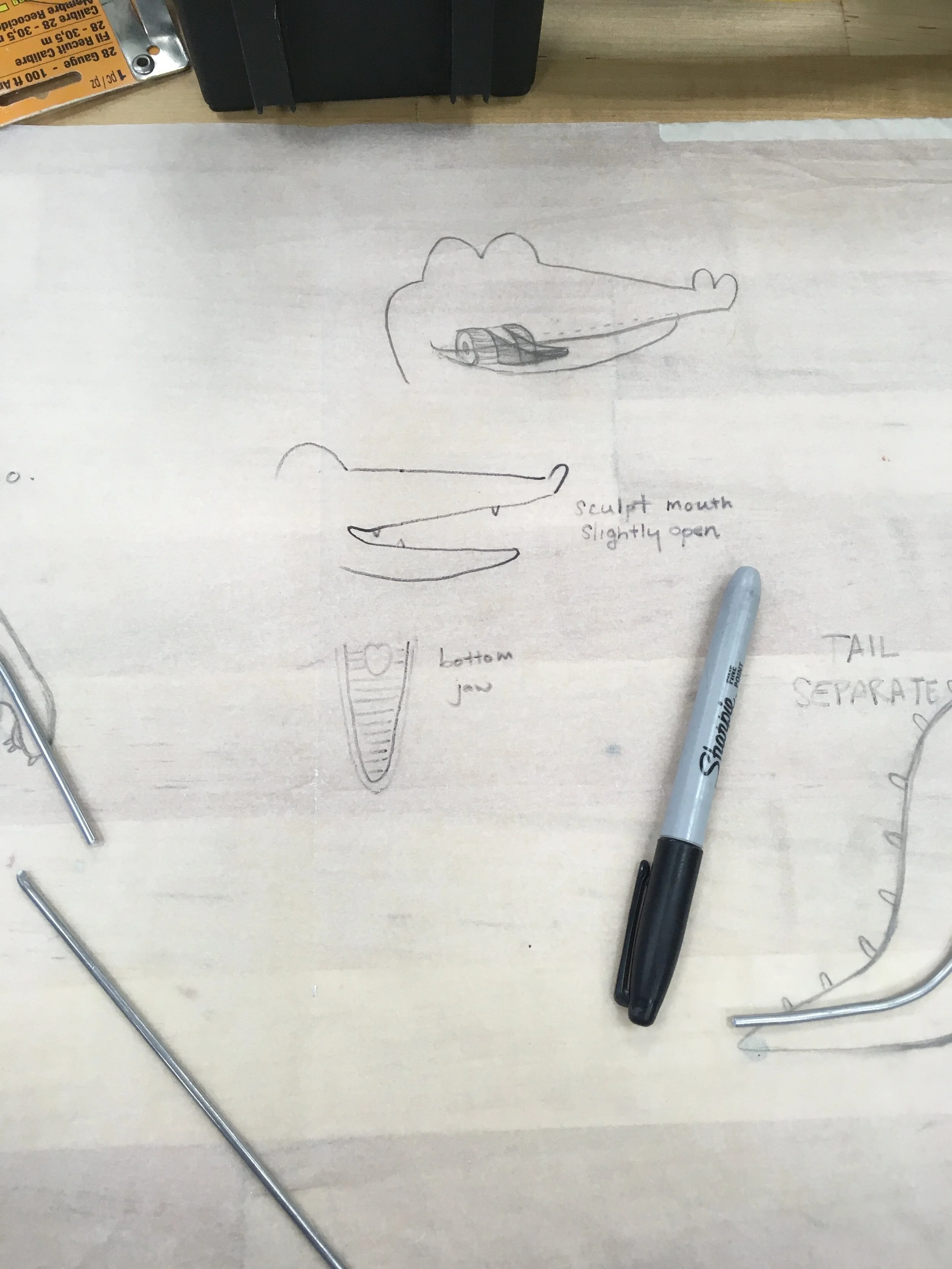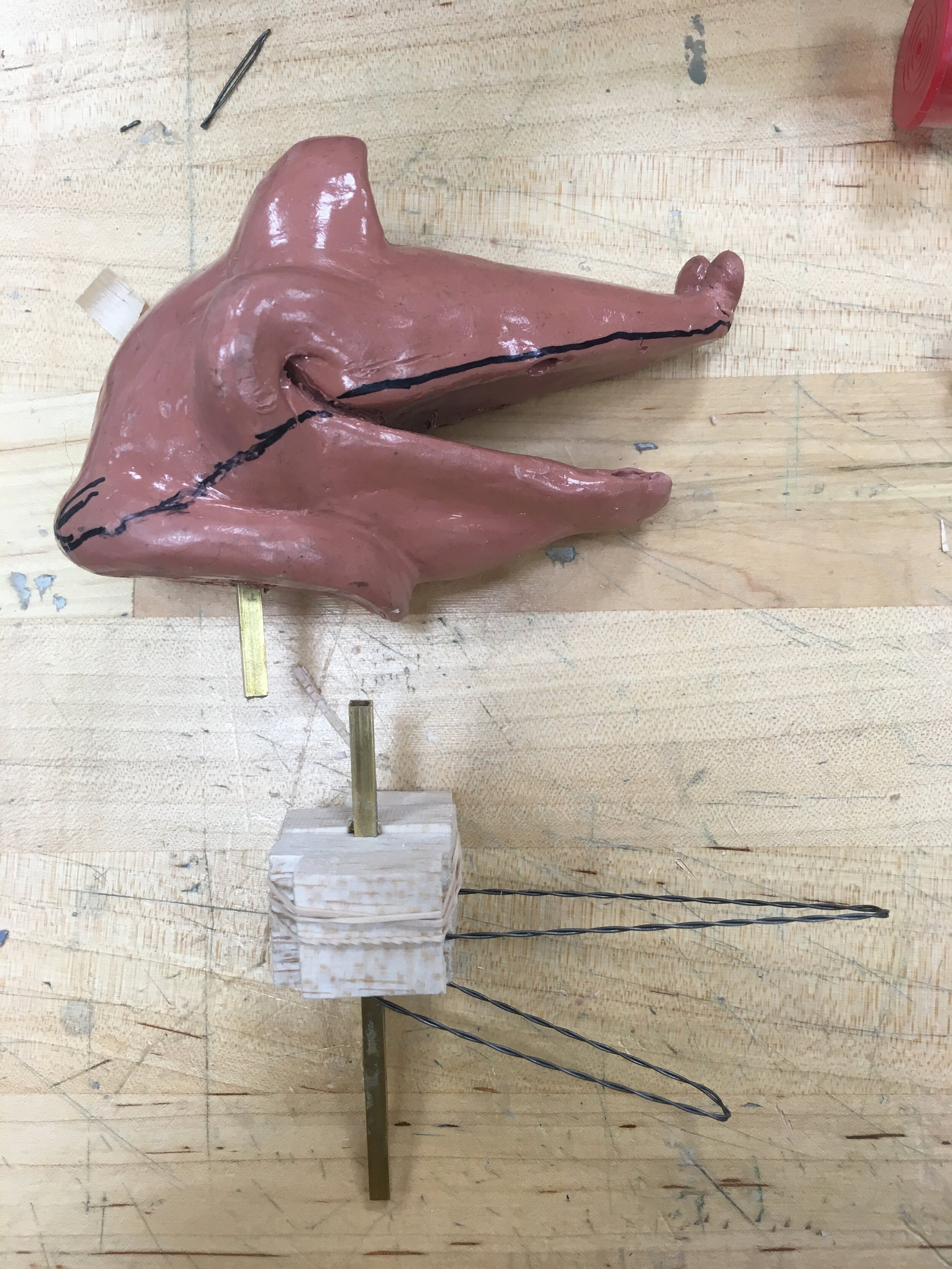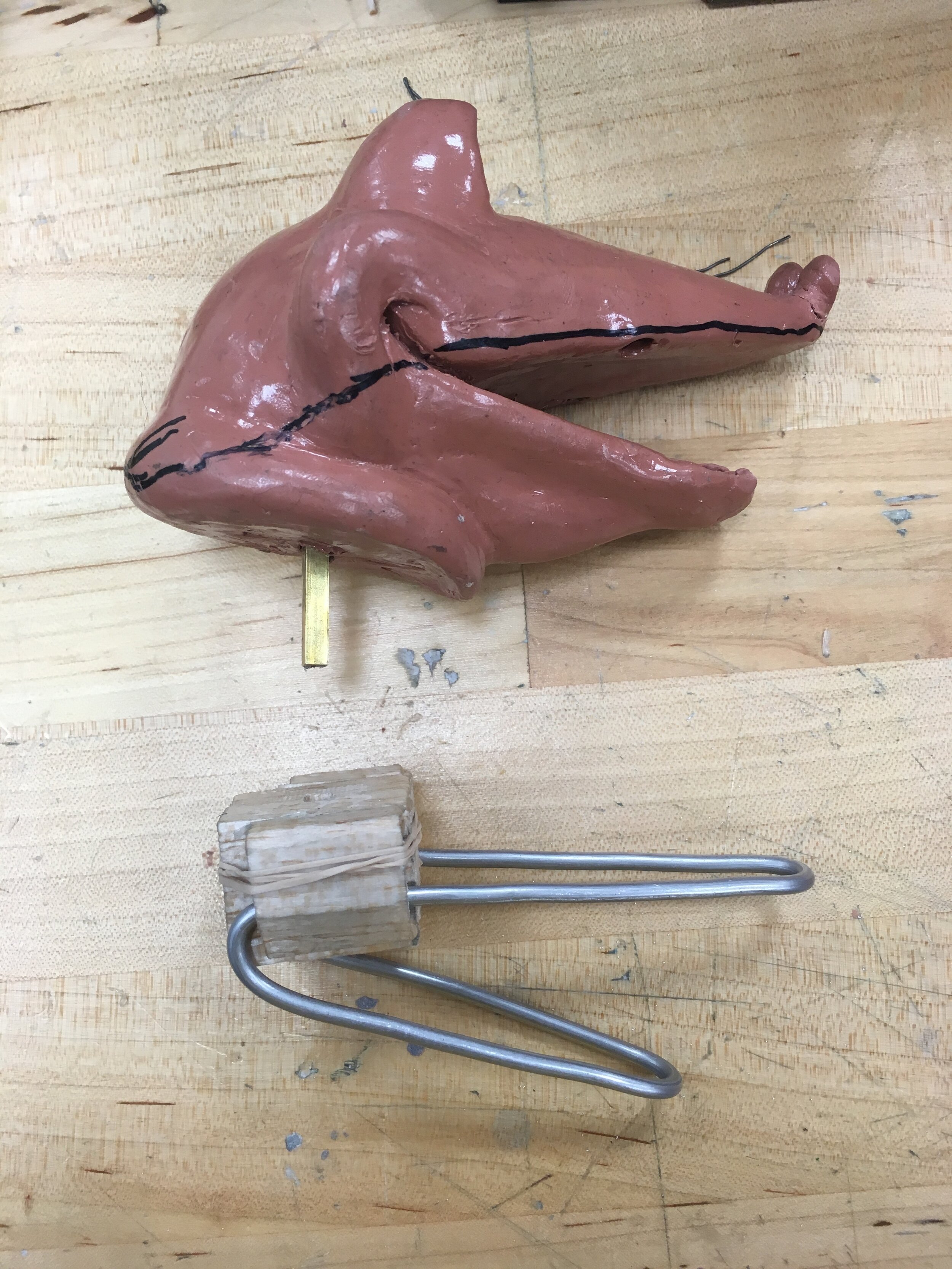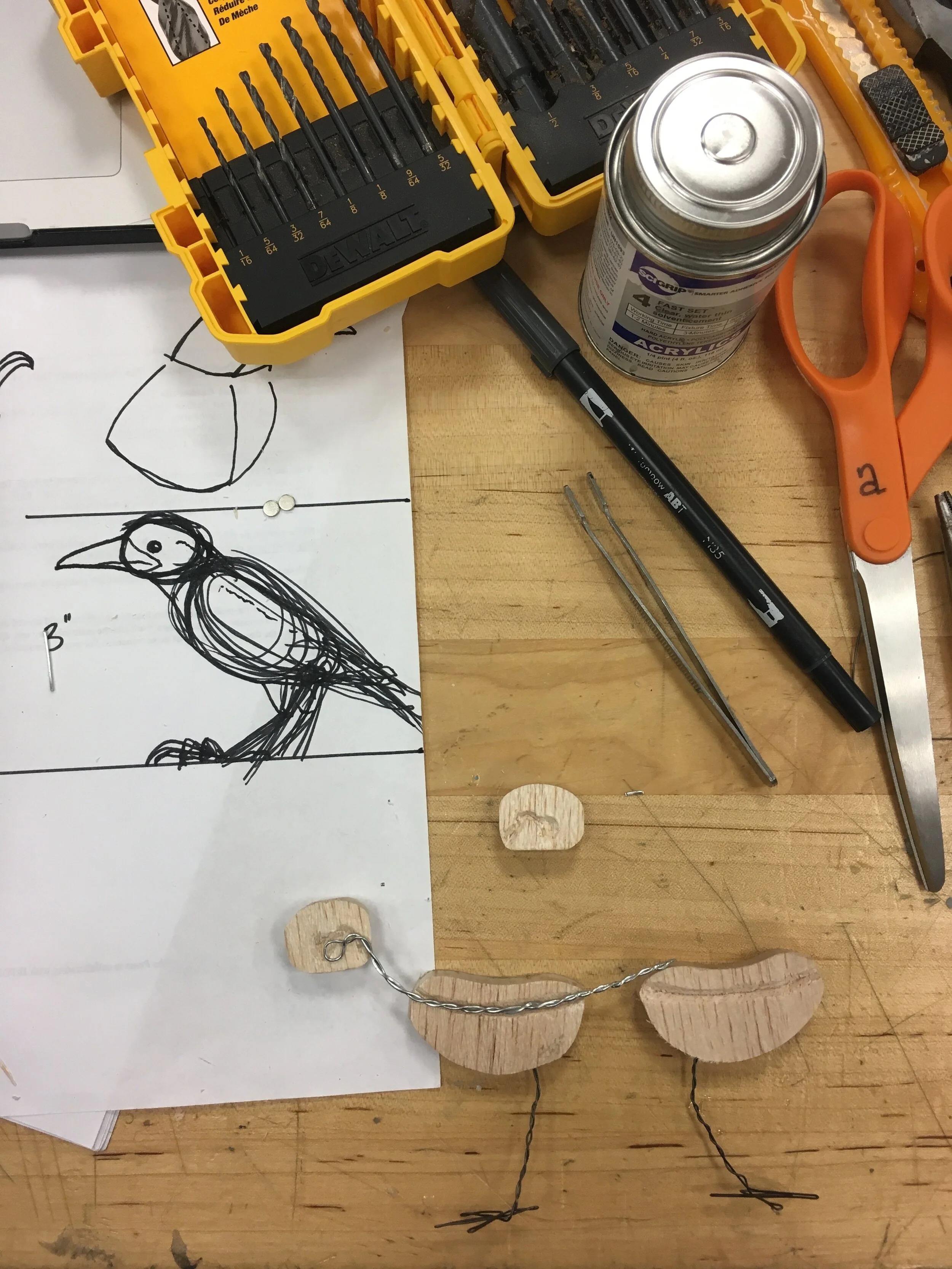We sure armature around here
/One of the most important jobs in stop motion is, in my view, making the puppet armatures. If a puppet is going to communicate the story well, which is its only job, it needs to be able to move right, and for that to happen it needs to have a good armature.
It begins with what’s called a ‘mechanical drawing.’ We need to draw out on paper the exact size of the character so we can plan out basically what their skeleton is going to look like. Then we take 1/8” aluminum wire and bend it into the correct shape!
The precise and slow-going art of armatures
Every puppet has unique challenges. Saúl, seen here, had two big ones: the character never leaves the chair he’s sitting in, and he’s very wide. When thin characters are made of foam, the foam itself doesn’t put up a lot of resistance and the character is easy to bend. If, however, we were to allow Saúl’s entire body to be made of solid foam, any attempt to bend the wire “spine” would be useless and the character would sit bolt upright through the whole movie. Boring.
The solution, like many, came from SCAD professor Nathan Asquith, who recommended we find a way to create a hollow space inside the puppet’s belly so the wire would be strong enough to hold a pose once there was foam all around it. I wrapped a rubber glove around his torso and did my best to secure it to the middle of his body where it wouldn’t touch any walls in the mold (this would create a large cavity on the puppet’s surface); I did an okay job.
Saúl’s rubber glove belly
There was also the matter of Saúl’s face. None of the characters “speak” in the same way, and Saúl’s challenge is that his face is that of a crocodile and not a person, meaning his mouth is a long triangle that needs to flap open and shut. I had a lot of fun with this:
It took a while to come up with a design, particularly because it was very important to me knowing I’ll be animating him that Saúl’s jaw hinged in the right place, which is very far back in his skull, even behind his eyes. I initially tried to make it with twisted 24-gauge wire, but ended up going with 1/8” so it would have the strength to resist being pulled in the wrong direction by the felt that’s going to be added around his snout.
And while the other characters are either pretty similar or still in progress, I also wanted to share my favorite little challenge so far.
Early work on the grackle which appears in the film
I love animals. Since I began animating, many of my favorite subjects have been things with tails, snouts, and extra legs, so I’ve been really looking forward to this armature. Acting as sort of an echo of the main character, this bird appears mainly in the beginning of the film then sporadically throughout the rest.
To make a living creature, any kind, appear to move convincingly to the audience, it’s important to know how the real versions are put together. I looked at a lot of bird skeletons in different resources to come up with this little design, which is what drove the idea for how to do the spine and the legs. The wings were going to be difficult considering the layering of feathers that needs to happen when birds fly, but for right now the armature was probably going to look about the same no matter the solution.
To get the legs in the right place, I determined the best solution was to essentially make the torso a little sandwich so I could guarantee getting the spine dead center, as well as have a convenient place to drill holes (one in each side) where I could anchor her legs. She’s made of twisted 24-gauge wire and balsa wood, which is super light, easy to wood glue, and can be carved with just an x-acto knife, and whatever that silvery wire I used for her spine is; I honestly don’t know what size it was, I think I just found it somewhere. Her face would be just a magnet so we could make different beaks, open and closed for her to swap out depending on the need. The end result:
My heart!! I can’t wait to see her finished.
I’ll be back with more soon!
